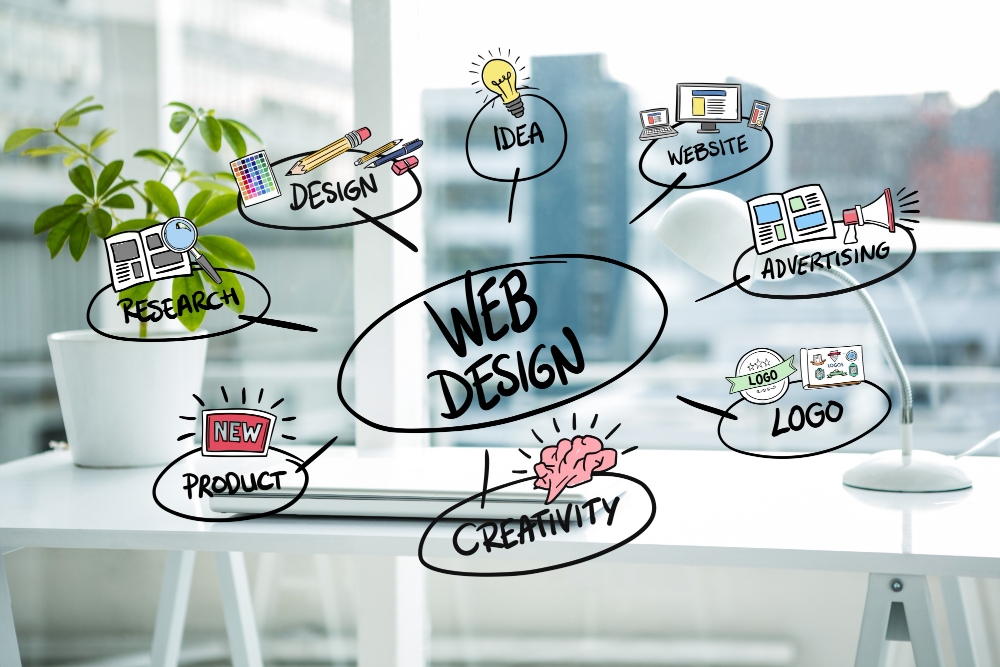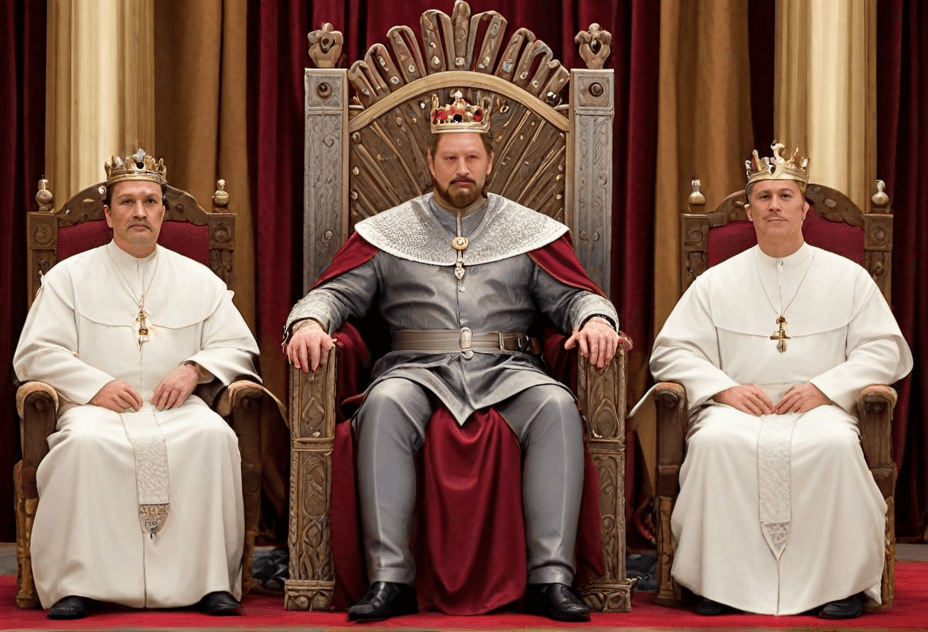Web Design
Building User-Centered Websites in 2024
In 2024, businesses are operating in a highly competitive digital landscape. With the rise of online shopping, remote work, and social media, having a user-friendly and visually appealing website is more critical than ever. A well-designed website not only attracts and engages visitors but also builds trust and credibility with potential customers.
Web design is an essential aspect of a company’s online presence. It involves the creation and optimization of the user interface, layout, and overall visual aesthetics of a website. Web designers must consider the website’s purpose, target audience, and the latest design trends to create a website that is intuitive, accessible, and aesthetically pleasing.
The following are some essential elements of modern web design that will help businesses build user-centered websites in 2024:
Mobile-First Design
With the majority of internet traffic coming from mobile devices, a mobile-first approach to web design is essential. A mobile-first design means designing for the smallest screen size first, then scaling up for larger screens. This approach ensures that the website is optimized for mobile users and provides a consistent user experience across all devices.
Mobile-first design has become a critical component of web design in recent years, and it is expected to continue to be a significant trend in 2024. With the increasing number of people accessing the internet through their mobile devices, businesses must prioritize mobile optimization when designing their websites.
A mobile-first approach means designing a website for the smallest screen size first, typically a smartphone, and then scaling up to larger screens, such as tablets and desktops. By starting with the smallest screen size, web designers can ensure that the website is optimized for mobile users and provides a consistent user experience across all devices.
Mobile-first design involves several key principles, including minimalism, simplicity, and fast loading times. A mobile-first website should have a clean, uncluttered design that prioritizes essential information and provides easy navigation for users. This is achieved by minimizing the number of elements on the page and using a clear visual hierarchy to guide users through the website.
Another crucial aspect of mobile-first design is fast loading times. With slower internet speeds on mobile devices, businesses must ensure that their websites load quickly to provide a seamless user experience. This can be achieved by optimizing images and videos, using caching and compression techniques, and reducing the number of HTTP requests.
In addition to providing a better user experience, mobile-first design also has a positive impact on search engine optimization (SEO). Google has stated that it prioritizes mobile-friendly websites in its search results, meaning that businesses that prioritize mobile optimization can improve their visibility and attract more visitors to their website.
In conclusion, mobile-first design is an essential aspect of modern web design. By prioritizing mobile optimization, businesses can provide a better user experience, improve their search engine rankings, and attract and retain more customers. With the majority of internet traffic coming from mobile devices, businesses that neglect mobile optimization risk losing out to competitors that prioritize mobile-first design.
Minimalism and Simplicity
In 2024, minimalism and simplicity will continue to be a dominant design trend. A clean, uncluttered design with a clear visual hierarchy can help users focus on the content and navigate the website with ease. A minimalist design also improves website loading speed and enhances the website’s accessibility for users with slower internet connections.
Minimalism and simplicity have become increasingly popular in web design in recent years and are expected to continue to be dominant design trends in 2024. A minimalist and simple design approach can have a significant impact on the user experience, making it easier for visitors to navigate a website and access the information they need quickly.
A clean, uncluttered design is a fundamental element of minimalism and simplicity. The use of white space and the removal of unnecessary design elements can create a calm and aesthetically pleasing user interface. A minimalist design also allows users to focus on the essential content and avoid distractions, reducing the risk of confusion or cognitive overload.
Clear visual hierarchy is another crucial element of minimalism and simplicity. By organizing content into a logical and easy-to-follow structure, web designers can create a website that is easy to navigate and understand. This can be achieved by using headings, subheadings, and a consistent font hierarchy to guide users through the website.
Minimalism and simplicity also have practical benefits for website performance. By reducing the number of design elements on a page, the website’s loading speed can be improved, providing a better user experience for visitors. In addition, a simple and minimalist design can be more accessible for users with slower internet connections, allowing them to access and navigate the website with ease.
In conclusion, minimalism and simplicity are important design trends that are expected to continue to be relevant in 2024. A clean, uncluttered design with a clear visual hierarchy can improve the user experience, making it easier for visitors to navigate a website and access the information they need quickly. Additionally, a minimalist design can improve website performance and accessibility, providing a better experience for all users. By incorporating minimalism and simplicity into their web design strategy, businesses can create a user-centered website that meets the needs of their customers and enhances their online presence.
Personalization and Interactivity
Personalization and interactivity are essential elements of a modern website. Personalization involves tailoring the website’s content and user experience to meet the individual needs of each user. Interactivity includes features such as chatbots, social media integration, and gamification to engage users and keep them on the website longer.
Personalization and interactivity are two key components of modern web design that have become increasingly important in recent years. In 2024, they are expected to continue to be essential elements of a successful website.
Personalization involves tailoring a website’s content and user experience to meet the unique needs of each individual user. This can be achieved through various techniques, such as user profiling, location-based targeting, and previous purchase history. By personalizing a website’s content, businesses can provide a more engaging and relevant experience for their customers, improving the chances of converting visitors into customers.
Interactivity is another crucial element of modern web design that involves engaging users and encouraging them to stay on a website longer. There are many ways to incorporate interactivity into a website, such as chatbots, social media integration, and gamification. Chatbots can provide a personalized and conversational experience for users, answering questions and providing assistance. Social media integration can encourage users to share content and engage with a brand on multiple platforms, while gamification can make the user experience more engaging and fun.
The benefits of personalization and interactivity are clear. Personalization can help businesses create a more engaging and personalized experience for their customers, leading to higher conversion rates and increased customer loyalty. Interactivity can encourage users to spend more time on a website, increasing engagement and brand awareness.
However, it is important to note that personalization and interactivity must be used thoughtfully and in a way that benefits the user. Overwhelming users with too much personalization or interactivity can be counterproductive and lead to a negative user experience. Web designers must find the right balance to create a website that is engaging, user-friendly, and meets the unique needs of their customers.
In conclusion, personalization and interactivity are essential elements of modern web design. By incorporating these techniques into their web design strategy, businesses can create a more engaging and personalized experience for their customers, leading to higher conversion rates and increased customer loyalty. However, it is crucial to use personalization and interactivity thoughtfully and find the right balance to create a website that is both engaging and user-friendly.
Accessibility and Inclusivity
Inclusivity and accessibility are critical aspects of modern web design. Web designers must consider users with disabilities, such as hearing and vision impairments, and design a website that is easy to use and navigate. This includes providing alternative text for images, captions for videos, and ensuring that the website is keyboard-navigable.
Accessibility and inclusivity have become increasingly important in web design in recent years. As more people rely on the internet to access information and services, it is essential that websites are designed to be inclusive and accessible for users with disabilities.
Inclusive web design involves creating a website that is accessible to all users, regardless of their physical or cognitive abilities. This includes designing for users with hearing and vision impairments, mobility issues, and other disabilities. Web designers must consider the unique needs of these users and ensure that the website is easy to use and navigate.
Accessibility is a critical component of inclusive web design. It involves ensuring that the website’s content and user interface are accessible to users with disabilities. This can be achieved by providing alternative text for images, captions for videos, and ensuring that the website is keyboard-navigable. Web designers can also use assistive technologies, such as screen readers and voice recognition software, to make the website more accessible for users with disabilities.
Inclusivity is also an essential component of web design. It involves creating a website that is inclusive of all users, regardless of their race, gender, sexual orientation, or cultural background. This can be achieved by using inclusive language, imagery, and design, and ensuring that the website reflects the diversity of its users.
The benefits of accessibility and inclusivity are clear. By designing a website that is accessible to all users, businesses can reach a broader audience and improve the user experience for everyone. This can lead to increased brand awareness, customer loyalty, and a positive reputation for the business.
In conclusion, accessibility and inclusivity are critical aspects of modern web design. Web designers must consider the unique needs of users with disabilities and design a website that is easy to use and navigate. They must also ensure that the website is inclusive of all users, regardless of their race, gender, or cultural background. By creating an accessible and inclusive website, businesses can reach a broader audience and improve the user experience for everyone.
Bold Colors and Typography
In 2024, bold colors and typography will be a popular design trend. Using bold colors and typography can help a website stand out from the competition and create a memorable brand identity. However, designers must balance the use of bold colors and typography with a minimalist design to ensure that the website is visually appealing and easy to read.
In 2024, bold colors and typography are expected to be a popular trend in web design. These design elements can help a website stand out from the competition, create a memorable brand identity, and provide a unique user experience. However, web designers must balance the use of bold colors and typography with a minimalist design to ensure that the website is visually appealing, easy to read, and accessible for all users.
Bold colors can add energy and vibrancy to a website, and they can help convey a brand’s personality and values. Web designers can use bold colors in a variety of ways, such as in backgrounds, headlines, and calls-to-action, to create a visually striking design. When using bold colors, designers must ensure that they do not overwhelm the user or make the website difficult to read. This can be achieved by using contrast and negative space to balance the use of bold colors and make the text easy to read.
Typography is another crucial design element that can help a website stand out from the competition. Web designers can use bold typography to create a unique brand identity and provide a memorable user experience. Bold typography can be used in a variety of ways, such as in headlines, body copy, and calls-to-action. When using bold typography, designers must ensure that the text is easy to read, and the font is appropriate for the brand’s personality and values.
The benefits of using bold colors and typography are clear. These design elements can help a website stand out from the competition, create a memorable brand identity, and provide a unique user experience. However, web designers must ensure that they use these elements thoughtfully and in a way that is visually appealing, easy to read, and accessible for all users. By balancing the use of bold colors and typography with a minimalist design, businesses can create a website that is both visually striking and user-friendly.
In conclusion, bold colors and typography are expected to be a popular trend in web design in 2024. These design elements can help a website stand out from the competition and create a memorable brand identity. However, web designers must use these elements thoughtfully and in a way that is visually appealing, easy to read, and accessible for all users. By incorporating bold colors and typography into their web design strategy, businesses can create a unique and engaging user experience that helps them stand out in the digital landscape.
In conclusion, web design is an essential aspect of a business’s online presence in 2024. A well-designed website can help businesses attract and retain customers, build brand credibility, and drive sales. Designers must consider the latest design trends, user needs, and accessibility standards to create a user-centered website that delivers a seamless user experience across all devices. By implementing the above elements, businesses can build a website that not only looks great but also performs well and meets the needs of their target audience.
In short in 2024, the hottest web design trend is to make websites that are accessible, inclusive, personalized, interactive, minimalist, bold, and easy to use. Basically, it’s like trying to design a website that’s the perfect combination of a Swiss Army knife, a party hat, and a comfortable pair of shoes. But if you manage to pull it off, you’ll have a website that’s like a superhero: it looks great, it’s super functional, and it saves the day for your users. So put on your thinking cap, grab your rainbow-colored font, and get ready to build a website that’ll knock everyone’s socks off!
FAQ – Frequently Asked Questions
User-centered website examples?
Here are some examples of user-centered websites:
Amazon – The website offers personalized product recommendations based on user search history, and allows users to leave reviews and ratings on products.
Dropbox – The website is designed to make file sharing and collaboration easy for users with a simple and intuitive interface.
Airbnb – The website offers a variety of user-friendly features including filters, maps, and reviews to help users find the perfect accommodations for their needs.
Mint – The website offers financial management tools and personalized recommendations based on a user’s spending habits and financial goals.
Slack – The website is designed to help teams collaborate and communicate effectively, with features such as channels, direct messaging, and file sharing.
Spotify – The website offers personalized music recommendations and curated playlists based on a user’s listening history and preferences.
Coursera – The website offers a variety of online courses and resources for learners, with user-friendly features such as course ratings and reviews, discussion forums, and progress tracking.
LinkedIn – The website is designed to help professionals connect and network with each other, with features such as job listings, messaging, and groups.
These websites prioritize the needs and preferences of their users, offering personalized features and intuitive interfaces that make it easy for users to find what they are looking for.
User-centered design examples?
Here are some examples of user-centered design:
Apple iPhone – The design of the iPhone prioritizes the user’s experience and ease of use, with features such as intuitive touch controls and a simple, streamlined interface.
Google Search – The design of the Google Search engine is focused on providing users with relevant and useful search results based on their queries, with features such as autocomplete and suggested searches.
Tesla Model S – The design of the Tesla Model S electric car prioritizes user comfort and convenience, with features such as a large touch screen display and customizable interior settings.
Nest Learning Thermostat – The design of the Nest Learning Thermostat focuses on user convenience and energy efficiency, with features such as automatic temperature adjustments and remote control via a mobile app.
Airbnb App – The design of the Airbnb mobile app prioritizes user convenience and ease of use, with features such as personalized search results, easy booking and payment options, and user reviews and ratings.
Fitbit – The design of the Fitbit wearable fitness tracker prioritizes user health and wellness, with features such as activity tracking, sleep monitoring, and personalized health insights.
Duolingo – The design of the Duolingo language learning app focuses on user engagement and motivation, with features such as gamified learning activities, progress tracking, and social sharing.
These examples demonstrate how user-centered design focuses on creating products and experiences that are intuitive, engaging, and personalized to meet the needs and preferences of users.
These were a few usercentered design example and usercentered website examples.





